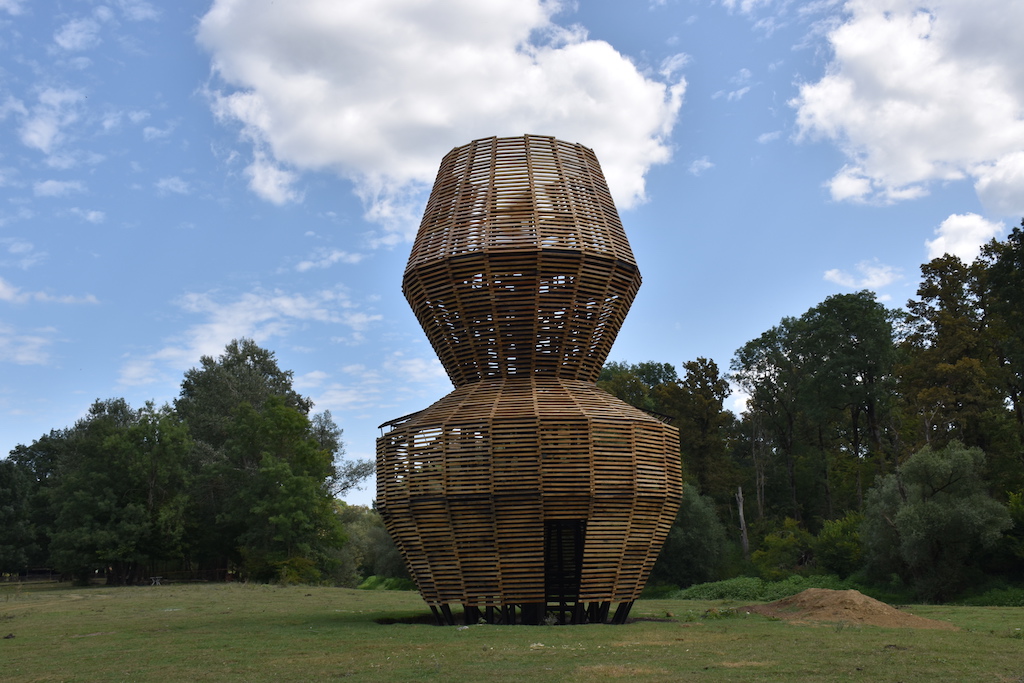5 Ways to Get a Free Week’s Stay in Croatia's Dream Destinations
February 24th, 2022 - If you happen to love spending time outdoors and have a few days to spare this spring or summer, Croatia’s national and nature parks offer amazing volunteering opportunities that involve a free week’s stay in some of the most spectacular locations in the country
We prepared a selection of five attractive volunteer programmes that are 5-10 days long and require up to 6 hours of work a day, with free accommodation, meals and transportation provided to participants. English speakers are encouraged to apply, as knowledge of Croatian isn’t a requirement for any of the following roles:
1. Dry Stone Restorer in Mljet National Park
Become a guardian of the past by restoring ancient dry stone walls in Mljet National Park. Traditional dry stone construction is inscribed in the list of intangible cultural assets of the Republic of Croatia, which means you’d literally help restore and preserve precious cultural heritage on Mljet island!
Volunteers will learn how to build and fix up walls, stairways and other dry stone structures. The job also involves clearing existing dry stone structures of vegetation, simple processing of stone using hand tools, and photographing dry stone walls before and after restoration.
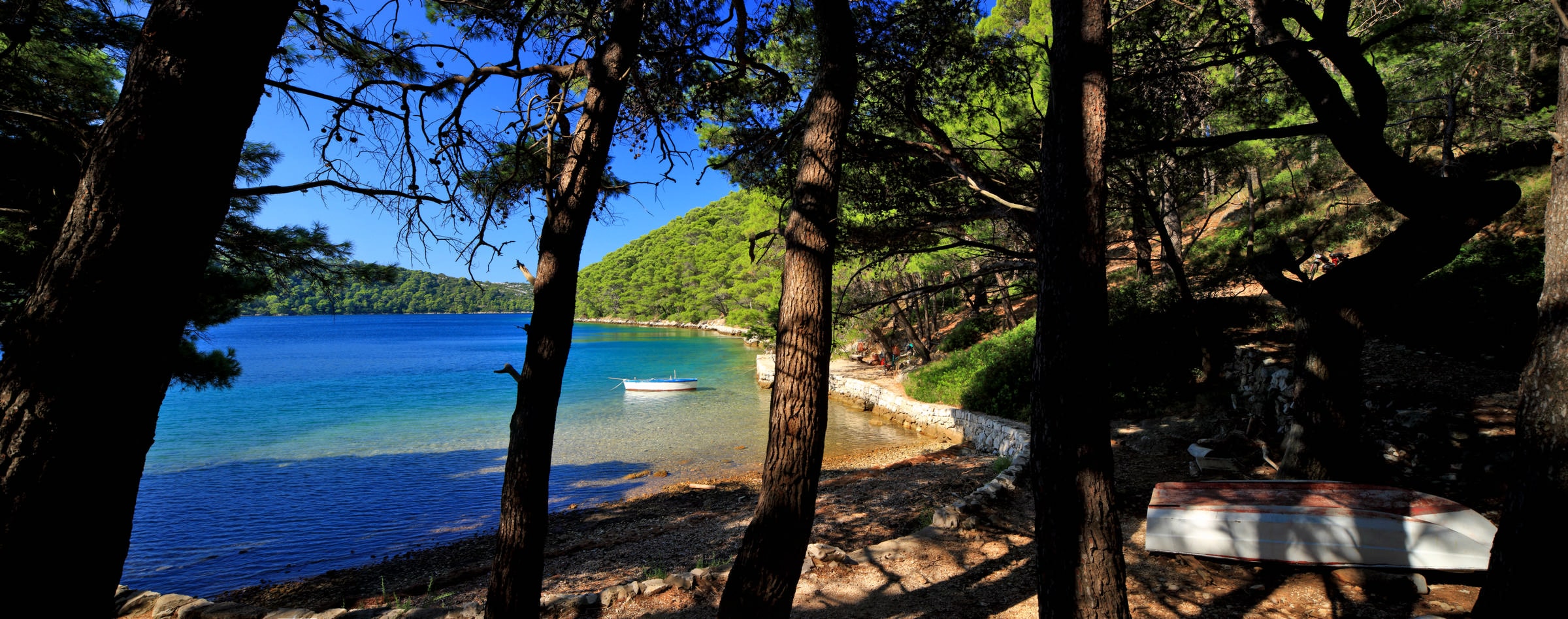 Mljet island / Photo © Mario Romulic
Mljet island / Photo © Mario Romulic
The programme takes place in April and is seven days long, including six days of work and one day off. Volunteers are expected to work six hours a day with a one-hour break, but considering that the physical work involved in this particular programme can be strenuous, the number or working hours can be reduced if needed.
All necessary tools will be provided by the Park. Accommodation is provided free of charge on Mljet island in the Collier building owned by the Park, which has seven rooms equipped with bunk beds, toilets, showers, a kitchen and a living room. Meals are also provided free of charge, with the Park delivering groceries to volunteers or providing free meals at the local hotel.
If stonemasonry isn’t your cup of tea and you’d prefer a less hands-on kind of creative work, may we suggest another volunteer programme on Mljet island:
2. Photo Amateur in Mljet National Park
A dream come true for anyone who loves island hopping and snapping pics of stunning landscapes (don’t we all?), this programme involves photographing the scenery and events in Mljet National Park in the period between April and June.
Depending on the time of year, volunteers will be required to photograph various locations, events and activities on Mljet island using their own gear. You’ll be capturing the island’s flora and fauna, cultural monuments and landmarks, historic sites, enchanting landscapes and fun summer events.
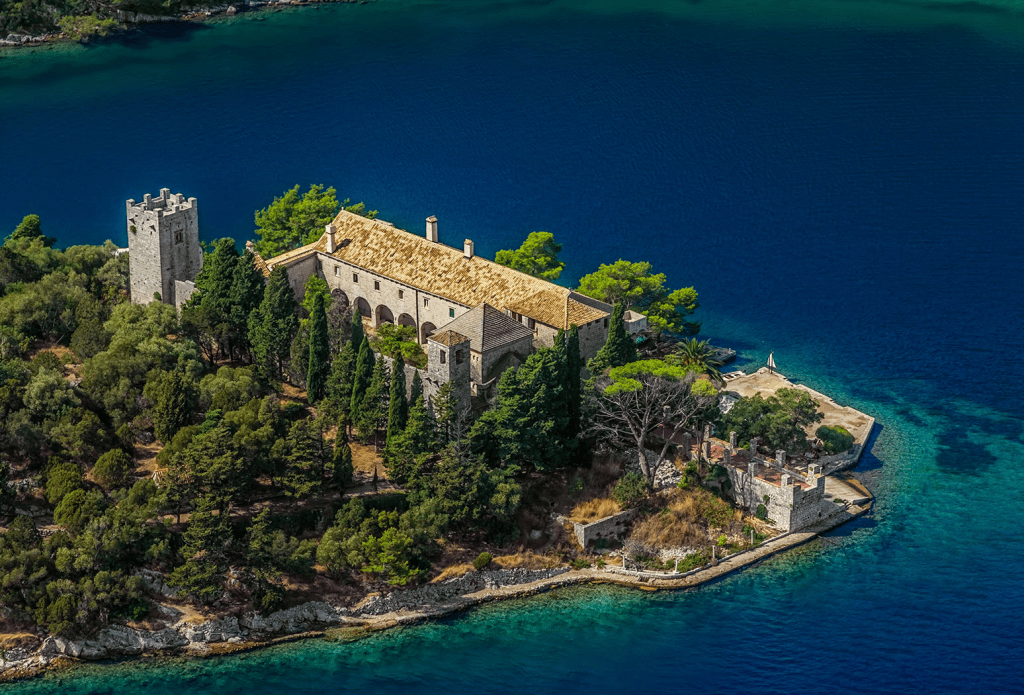 Mljet National Park / Photo: volonteri.parkovihrvatske.hr
Mljet National Park / Photo: volonteri.parkovihrvatske.hr
Those who choose to participate in this particular programme will sign a statement of the assignment of the photos to Mljet National Park. You’ll have to submit the photos shortly after the programme is over, and can look forward to seeing them featured in the Park’s publications in Croatia and abroad.
A minimum of one DSLR camera with a lens is required to partake in this programme.
You’ll have plenty of time to explore the island on your own time, and there’s no shortage of things to do: there are over 40 kilometres of hiking and cycling trails, you can rent a kayak or canoe to explore the saltwater lakes on Mljet, or take diving lessons with a certified instructor.
For all Mljet-based programmes, volunteers are to bear the cost of travel to Mljet island, and the Park will provide transport from the ferry port on Mljet to the place of accommodation.
3. Gull Catcher in Kornati National Park
Are you a fan of the great outdoors and love being in close contact with wildlife? Consider becoming a seagull catcher in Kornati National Park. Don't worry, you'll be releasing them too!
You’ll be joining the Park’s experts as they band and monitor Caspian gulls in the stunning Kornati archipelago, specifically on a few islands where seagulls are known to nest.
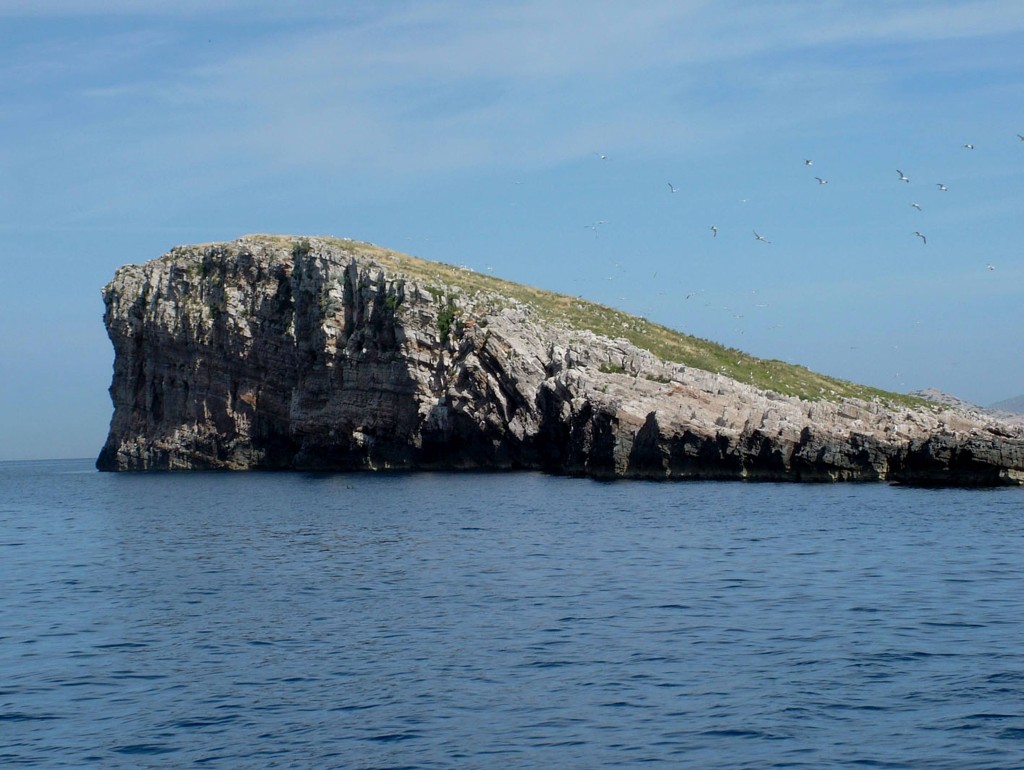 Kornati National Park / Photo: volonteri.parkovihrvatske.hr
Kornati National Park / Photo: volonteri.parkovihrvatske.hr
Do you dare to catch a young gull with your bare hands? If you do, you get to name the bird and take notes as it gets banded by a qualified employee of the Park. Banding and monitoring allows experts to track the behaviour and habitats of seagulls in order to collect data used to ensure protection of the species.
Volunteers will receive training prior to starting work and will be supervised by the Park staff. The programme takes place in May and June lasts about ten days, with volunteers expected to work seven hours a day.
Accommodation is provided and free, and in this case, it’s pretty amazing: you’ll be staying on a sailboat owned by the National Park Kornati, fully furnished and featuring 3 cabins, 6 beds, a living room, kitchen and toilet.
 Kornati National Park / Photo © Mario Romulic
Kornati National Park / Photo © Mario Romulic
Groceries are provided free of charge, and volunteers can either prepare meals on their own or seek the help of the volunteer manager.
Volunteers have to arrange transportation to Murter island, while further transport from Murter and within the Park area is organised by the Park and free of charge.
4. Traditional Gardener in Lonjsko Polje Nature Park
Lonjsko Polje (Lonja Field) is the largest protected wetland in Croatia, located approximately 70 km south-east of Zagreb.
If you have a green thumb and don’t mind getting your hands dirty, you’d be a great fit for a traditional gardener in Lonjsko Polje Nature Park. You’d help clean up the untended plots in the Park and plant new seedlings around traditional wooden houses in the villages of Krapje and Čigoč - think of it as traditional landscape design!
 Lonjsko Polje Nature Park / Photo © Mario Romulic
Lonjsko Polje Nature Park / Photo © Mario Romulic
The programme takes place in April and lasts five days, six hours of work each.
Accommodation is provided free of charge in a dormitory in Krapje. The facility is equipped with a small kitchen and a bathroom, and has central heating. As volunteers will be sleeping on spare beds, they are required to bring their own sleeping bags. Groceries are provided free of charge, and bikes and vehicles are available to use for transportation within the Park.
5. Guardian of Plant Biodiversity in Brijuni National Park
There’s not much need for gardening on Brijuni islands - domestic wildlife and imported species such as mountain zebras and mouflons take care of landscaping by nibbling away at the grass at all times.
There’s a single item on the menu that the animals don’t like: a spiky flower called Spanish oyster thistle. Since the wildlife practically mows the lawn, it removes all natural obstacles that would prevent the spread of the Spanish oyster thistle, allowing it to take over whole areas that would otherwise be home to other plants.
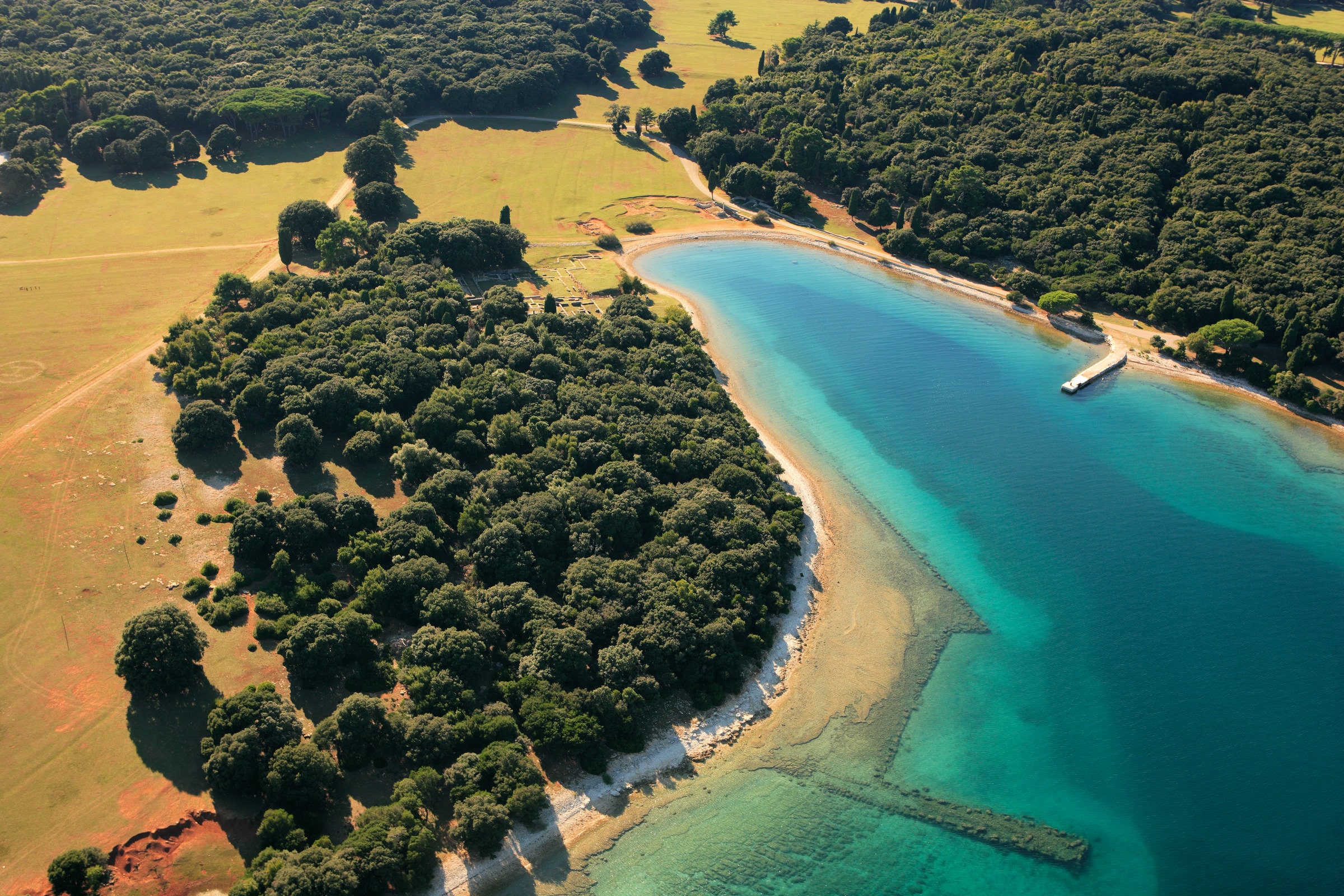 Brijuni islands / Photo © Mario Romulic
Brijuni islands / Photo © Mario Romulic
As a volunteer, you’ll help maintain the biodiversity on the meadows of Veliki Brijun island by keeping the pesky thistle in check. You’ll be removing the aggressive plant using provided gardening tools.
Volunteers are needed in the month of May and are required to put in 6 hours of work daily. Beyond that, the islands are yours to enjoy: explore the Safari and Ethno Parks, rent golf equipment and play on the golf course opened in 1922, or go for a swim at one of Brijuni’s pristine beaches.
The Brijuni are also a nice jumping off point for trips in Istria. Discover the ancient Roman monuments in Pula which is located only 7km away from Fažana, or visit the picture-perfect city of Rovinj.
 Wildlife on Brijuni islands / Photo © Mario Romulic
Wildlife on Brijuni islands / Photo © Mario Romulic
Accommodation is provided in one of the apartment buildings on Veliki Brijun island that are owned by the Park. Apartments are equipped with toilets, bathrooms, and a kitchen; rooms are shared with one or two other volunteers.
Groceries are provided free of charge and delivered to the apartment building, and one meal a day is also provided free of charge in the workers’ restaurant.
Volunteers have to arrange transport to Fažana town, and boat transportation to and from Veliki Brijun island is organised by the Park free of charge for the duration of the volunteer programme.
***
Applicants who don’t speak Croatian must be able to speak English in order to communicate with the park authorities and volunteer coordinators.
You can find more information about these and other volunteer programmes on the website Volunteer in Parks of Croatia.
Looking to apply? Fill out this form (in English), pick a programme you like and specify when you're free to participate, and the relevant programme coordinators will get back to you.
Please note that some of the programmes might not be accepting applications for the time being, or might be otherwise affected by epidemiological measures.
Check out our comprehensive Guide to the Nature and National Parks of Croatia.
Lonjsko Polje Nature Park Observatories Add to Growing Tourist Offer
August 22, 2021 - Lonjsko Polje Nature Park observatories are yet another addition tempting visitors this summer.
To increase the attractiveness and educational capacity of Lonjsko Polje Nature Park by building a visitor center, "Crna Roda Osekovo," Lonjsko polje Nature Park has enriched its tourist offer with three new observatories that further attract visitors to the park.
The "Roda" observatory is located not far from the Visitor Center Čigoč, the "Ptica kosac" observatory is near the visitor center Repušnica, while the "Traditional fishing" observatory is located right by the river Lonja not far from the Visitor Center Osekovo, which is expected to open in September.
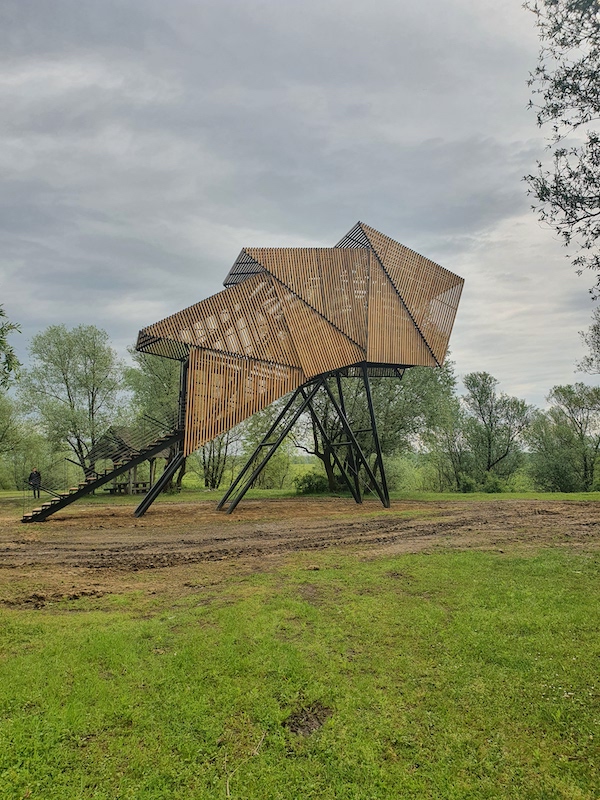
"By building observatories, we have additionally enriched the content we offer to visitors. Visitors are delighted with their appearance and the scenes they can see from the observatories because the observatories are located in attractive locations near the Lonja River or the plains where indigenous animals live. Visitors can visit these localities, and they will find out how to get to them at our info centers," said the director of the Public Institution Lonjsko Polje Nature Park, Marija Kušmiš.
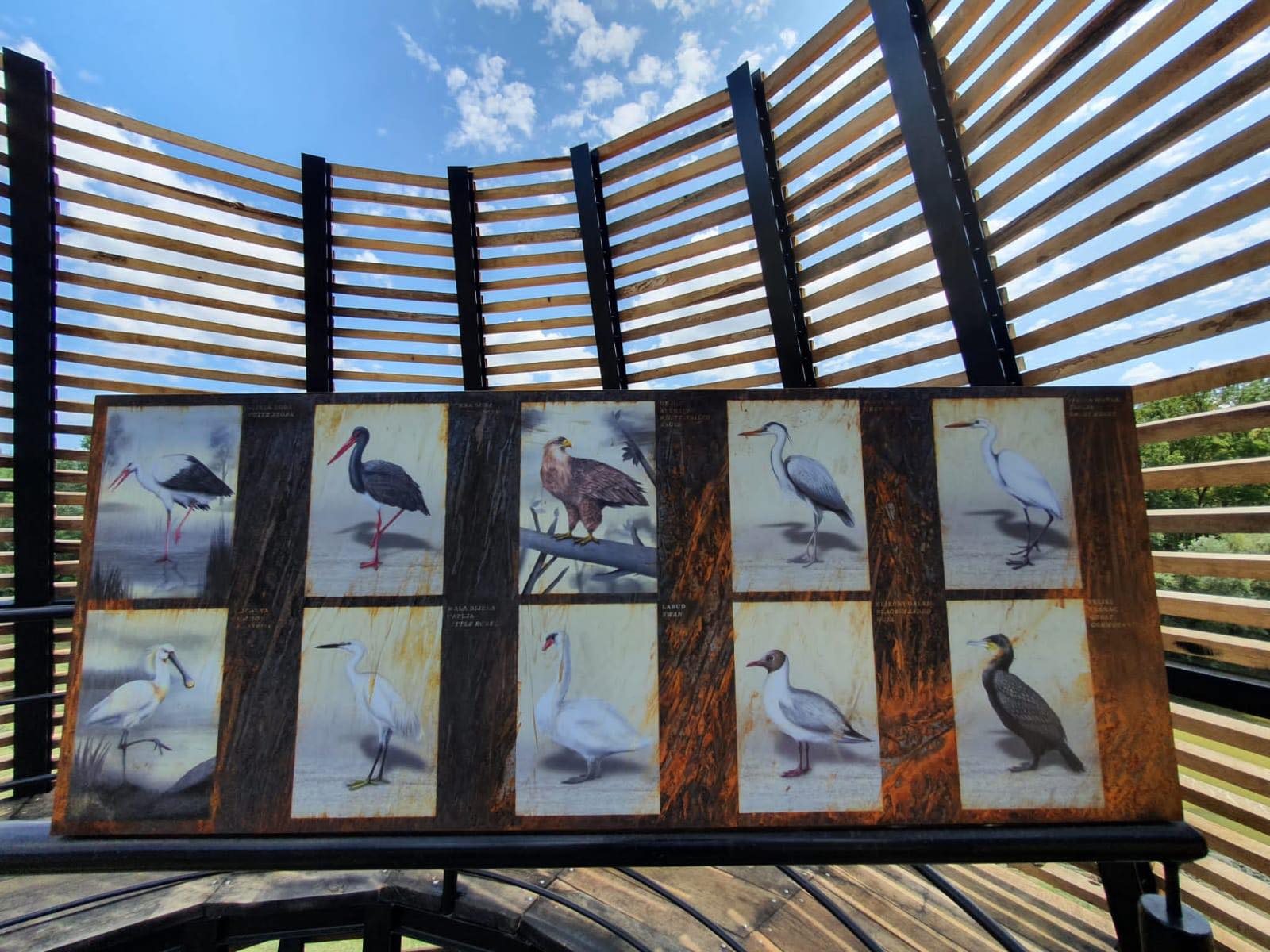
The construction is co-financed by the European Union from the European Regional Development Fund through the Operational Program Competitiveness and Cohesion and the Ministry of Economy and Sustainable Development, and the Fund for Environmental Protection and Energy Efficiency. The Roth i Čerina d.o.o. design team is responsible for their look.
Recall, just a few weeks ago, the third-largest protected park in Croatia also introduced bitcoin and other cryptocurrencies as a means of payment.
Thus, visitors can purchase tickets with cryptocurrencies via Eletrocoin PayCek for a solar-powered boat ride on the Strug river, known as the "Slavonian Amazon," a tour of the "Posavina safari" - a traditional pasture, a tour of the ornithological reserve Krapje đol and observe the fields from the new observatories "Bird reaper," "White Stork" or "Vrška." Visitors can also use the currency for all services and souvenirs.
“We are glad to be the first nature park to introduce this service. We certainly encourage investors in cryptocurrencies to think about the importance of the protected area, its sustainability, but also to enjoy the natural beauty," said Marija Kušmiš, director of the Lonjsko Polje Nature Park.
Electrocoin d.o.o. points out that the interest of business entities in introducing payments for their products and services in cryptocurrencies is constantly growing. Furthermore, they are extremely pleased that this trend is not exclusively related to companies in the technology and finance segment. An excellent example of this is the excellent cooperation with Lonjsko Polje Nature Park, which recognized the potential of implementing the PayCek cryptocurrency payment system in its business and thus showed that it not only keeps pace with future technological trends but also recognizes the need for a new generation of consumers.
Lonjsko Polje is the first park in Croatia, and beyond that has allowed its visitors to visit the Park and enjoy other content from the offer by paying in cryptocurrencies.
For all you need to know about Lonjsko Polje, be sure to follow our dedicated page on Total Croatia.
For more on travel in Croatia, follow TCN's dedicated page.
First in Croatia: Lonjsko Polje Nature Park Accepts Cryptocurrencies
August 2, 2021 - Lonjsko Polje Nature Park accepts cryptocurrencies and is the first nature park in Croatia to welcome digital money!
Virtual and digital currencies are becoming increasingly popular. Just a few days ago, El Salvador became the first country in the world to introduce bitcoin as the official currency, i.e., a parallel legal tender with the US dollar.
Now, the third-largest protected park in Croatia, Lonjsko Polje Nature Park, apart from the kuna, has introduced bitcoin and other cryptocurrencies as a means of payment, reports HRTurizam.
Thus, visitors can purchase tickets with cryptocurrencies via Eletrocoin PayCek for a solar-powered boat ride on the Strug river, known as the "Slavonian Amazon," a tour of the "Posavina safari" - a traditional pasture, a tour of the ornithological reserve Krapje đol and observe the fields from the new observatories "Bird reaper," "White Stork" or "Vrška,". Visitors can also use the currency for all services and souvenirs.

“We are glad to be the first nature park to introduce this service. We certainly encourage investors in cryptocurrencies to think about the importance of the protected area, its sustainability, but also to enjoy the natural beauty," said Marija Kušmiš, director of the Lonjsko Polje Nature Park.
Electrocoin d.o.o. points out that the interest of business entities in introducing payments for their products and services in cryptocurrencies is constantly growing. They are extremely pleased that this trend is not exclusively related to companies in the technology and finance segment. An excellent example of this is the excellent cooperation with Lonjsko Polje Nature Park, which recognized the potential of implementing the PayCek cryptocurrency payment system in its business and thus showed that it not only keeps pace with future technological trends but also recognizes the need for a new generation of consumers.
Lonjsko Polje is the first park in Croatia and beyond, which since yesterday has allowed its visitors to visit the Park and enjoy other content from the offer by paying in cryptocurrencies.
For more on travel in Croatia, follow TCN's dedicated page.
Lonjsko Polje Nature Park Sees 150% Visitor Increase Compared to 2020
July the 23rd, 2021 - Some excellent news for the popular Lonjsko polje Nature Park (PP Lonjsko polje) in continental Croatia, which has experienced 150 percent more tourists when compared to pandemic-dominated 2020, including many more foreign visitors.
As Poslovni Dnevnik writes, the beautiful Lonjsko Polje Nature Park has been enjoying more visitors and much higher attendance than it did last year, and that same increased attendance should be further contributed to by the Crna roda (Black stork) Visitor Centre, the opening of which is planned for this September. The new visitor centre is part of a 20 million kuna project co-financed by European Union (EU) funds, according to Lonjsko polje Nature Park's administration.
The increase in attendance of a more than encouraging 150 percent was realised in the first six months of this year when compared to the comparable period last year. Although the figures from before the coronavirus pandemic haven't yet been reached, they point out from Lonjsko polje Nature Park that this year has finally seen the return of foreign visitors from other parts of Europe, including French, Germans Poles and British tourists.
However, most of the visitors do continue to be domestic tourists from all over Croatia, and some of them stay for a few days, using family/private accommodation, on family farms and the like, in places and villages within or near the park itself.
There are no new accommodation units being constructed for tourists, but the existing ones have been improved, they say from the park, emphasising that most visitors are still day trippers. They're mainly interested in going on the solar-powered boats on the river Strug, also known as the "Slavonian Amazon".
There are two such boats and another ''ordinary'' small boat, also used for excursions. Visitors are also currently interested in weekend programmes, with sailing and a tour of the Lonjsko polje Nature Park with departures to several lookouts/observatories, which they plan to open two more of this summer/
For more, follow our dedicated travel section.
Name Lonjsko Polje Nature Park Storks and Watch Them via Live Stream!
April 29, 2021 - The public is invited to name the Lonjsko Polje Nature Park storks and can even watch them via live stream! Name proposals are being accepted until May 10.
While Malena and Klepetan in Brodski Varoš, near Slavonski Brod, the most glamorous stork couple in Croatia still shine with that celebrity-like glow, new stork generations are always coming. Perhaps ''The New Wings on the Block'' who will one day conquer the scene, can be found in the ever famous and attractive Lonjsko Polje Nature Park.
Čigoč village is already known as the first stork village in Europe for the various nests on the wooden roofs of its houses. As Turističke Priče reports, the Lonjsko Polje Nature Park authorities are inviting the public to name the storks in Čigoč village as they're still nameless. The storks' nests can be monitored on a livestream on the official Lonjsko Polje website, and the audience can send in their name suggestions in the comment sections until May 10. Lonjsko Polje's employees will decide which names best fit the individual storks.
Lonjsko Polje was declared a nature park back in 1990 and is located 75 kilometres from Zagreb. It's an easily accessible place to visit from Croatia's capital and other places in central Croatia. In addition to storks which are the most famous birds in the area, 350 different bird species have made Lonjsko Polje their home. Indigenous species of cows, Posavina horses, and Turopolje pigs are also found there. The wooden houses are created without using one single nail, making them a superior architectural site and not just great nesting places for birds.
The newly opened Osekovo Visitor Centre is specialised for its educational content focused the black stork, an endangered species in Croatia, and its mascot, Barica, makes it interesting and child-friendly. The entire park is a great place to go on a family trip.
''A ticket for a weekend program is 50 kuna per person, 5 kuna per child ages three to six, and 15 kuna for children 7-10 years old. The price includes walking around and sightseeing in Krapje village with its construction heritage, the Krapje Djol ornithological reserve and riding the solar-powered boat and tourist train. The Repusnica Visitor Centre offers walks by the Vrbacinec excursion site, while the Čigoč Visitor Centre will tell you a story about the white stork every Sunday at 13:00, and then you can sightsee Čigoč and Lonjsko Polje“, writes the Turističke Priče site.
Learn more about Lonjsko Polje on our TC page.
For more about travel in Croatia, follow TCN's dedicated page.
Croatian Wetland Areas Mark 50th World Wetlands Day
February 2, 2021 – Today is the jubilee 50th World Wetlands Day. Croatia marks this year's theme "Wetlands and Water" in line with epidemiological measures, as many public institutions of Croatian wetland areas organize numerous online and offline activities.
On the occasion of World Wetlands Day, the Ministry of Economy and Sustainable Development has pointed to a growing freshwater shortage crisis that poses a significant threat to humanity and the planet. This year's theme – Wetlands and water – pays special attention to wetlands as a freshwater source.
50 percent of wetlands lost in the last 50 years
Croatia has several wetlands: Nature Parks Kopački Rit, Lonjsko Polje, and Vrana Lake, the Special Reserve Crna Mlaka in Jastrebarsko, and the Lower Neretva River. Croatian wetland areas seek to encourage actions to restore wetlands and stop their loss by marking World Wetlands Day.
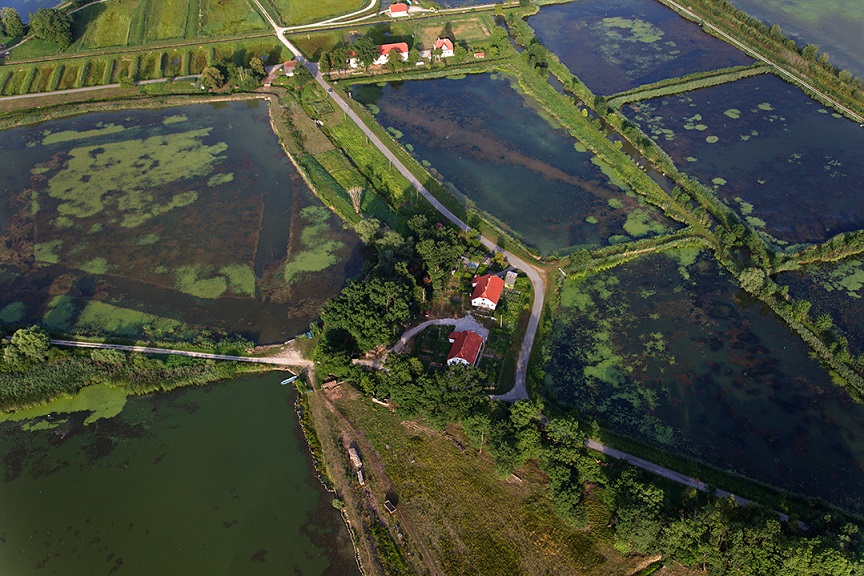
Crna Mlaka in Jastrebarsko / Public Institution Green Ring of the Zagreb County
On this day in 1971, the Convention on Wetlands of International Importance, Especially as Waterfowl Habitat, was signed in the Iranian city of Ramsar. The Convention, known as the Ramsar Convention, obliges each signatory country to the general conservation of wetlands on its territory and provides a framework for international cooperation in protecting and sustainable use of wetlands.
Croatia has been a signatory to the Ramsar Convention since 1991, and the above mentioned Croatian wetland areas are on the Ramsar Convention's list.
As a contribution to implementing the Ramsar Convention in Croatia, three relatively small areas within the Neretva delta were proclaimed as special reserves last year. The places named "Blue Eye and Lake Desna," "Neretva's Estuary," and "Kuti" have preserved, unique, and representative wetland habitats and characteristic species of particular importance for Croatia.

Neretva River / Copyright Romulić and Stojčić
Although wetland habitats represent one of the greatest values of biological and landscape diversity, since more than 40 percent of plant and animal species are associated with them, they are also the most endangered ecosystems in the world. In the last 50 years, 50 percent of all wetlands in the world have been lost.
Wetland areas as the best flood defense
Apart from being wet habitats for numerous plant and animal species, they are also crucial in adapting to climate change. Thus, wetland habitats are extremely important in flood defense, especially in Croatia.
Lowland rivers with moist habitats along their trough, into which they flow during high water levels, represent the best way to defend against floods. This is precisely how the flood defense system in Posavina was built. Thus, high waters of the Sava River flow into the Lonjsko Polje Nature Park floodplains, while Kopački Rit Nature Park "receives" high waters of the Drava and Danube, thereby changing their landscapes.
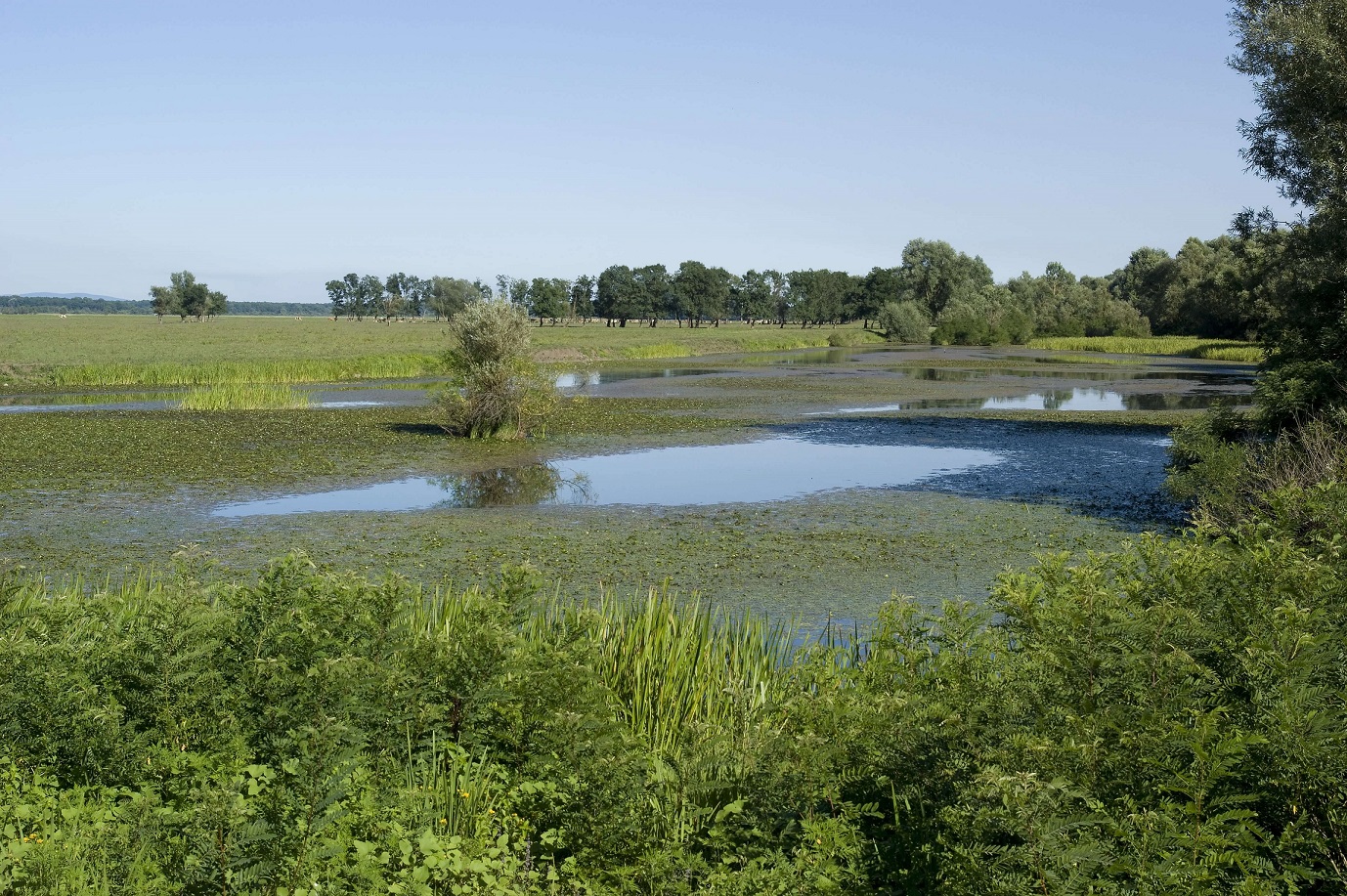
Lonjsko Polje Nature Park
The value of wetland habitats is also related to the restoration of groundwater supplies, the consolidation of shores, the retention of nutrients and sediments, and water purification. On World Wetlands Day, public institutions that manage protected areas in Croatia organize numerous activities.
Due to epidemiological measures, Lonjsko Polje Nature Park will not organize the traditional gathering "Future on the edge of the swamp" this year. However, the importance of water and wetlands will be discussed at a small event at the Public Institution headquarters in Krapje.
As part of this event, Matica Hrvatska's branch from Kutina will review the meetings "Future on the Edge of the Swamp" in the last 20 years. Employees of the Public Institution will participate in a workshop on the construction of roof platforms for white stork nests.

Village of Krapje / Lonjsko Polje Nature Park Boris Krstinić
In Northern Dalmatia, Vrana Lake Nature Park continues cooperation with the School of Applied Arts and Design in Zadar. Students will have virtual and field lectures on the topic of wetlands, their importance, and rich biodiversity, emphasizing birds. Students will create illustrations of different bird species presented in a virtual exhibition on the Park's website.
The traditional 9th "Bird Masquerade" will be organized for primary school students, and students from 1st to 4th grade of local primary schools will make masks of wetland birds. On February 6, free bird watching will be organized for all visitors.
The promotional video "Vrana Lake Nature Park: a place where birds always return" by the author Goran Šafarek will be shown for the first time:
Kopački Rit Nature Park traditionally celebrates World Wetlands Day in cooperation with Elementary School in Bilje. Second-grade students prepared artworks, literary ensembles, and a musical performance on the topic of Kopački Rit and its natural features. A lovely presentation of their work is also available online.
The Public Institution for the Management of Protected Nature Areas of the Dubrovnik-Neretva County conducts education on the importance of wetlands through an LED screen in Metković, where images with short educational texts about wetlands will be shown.
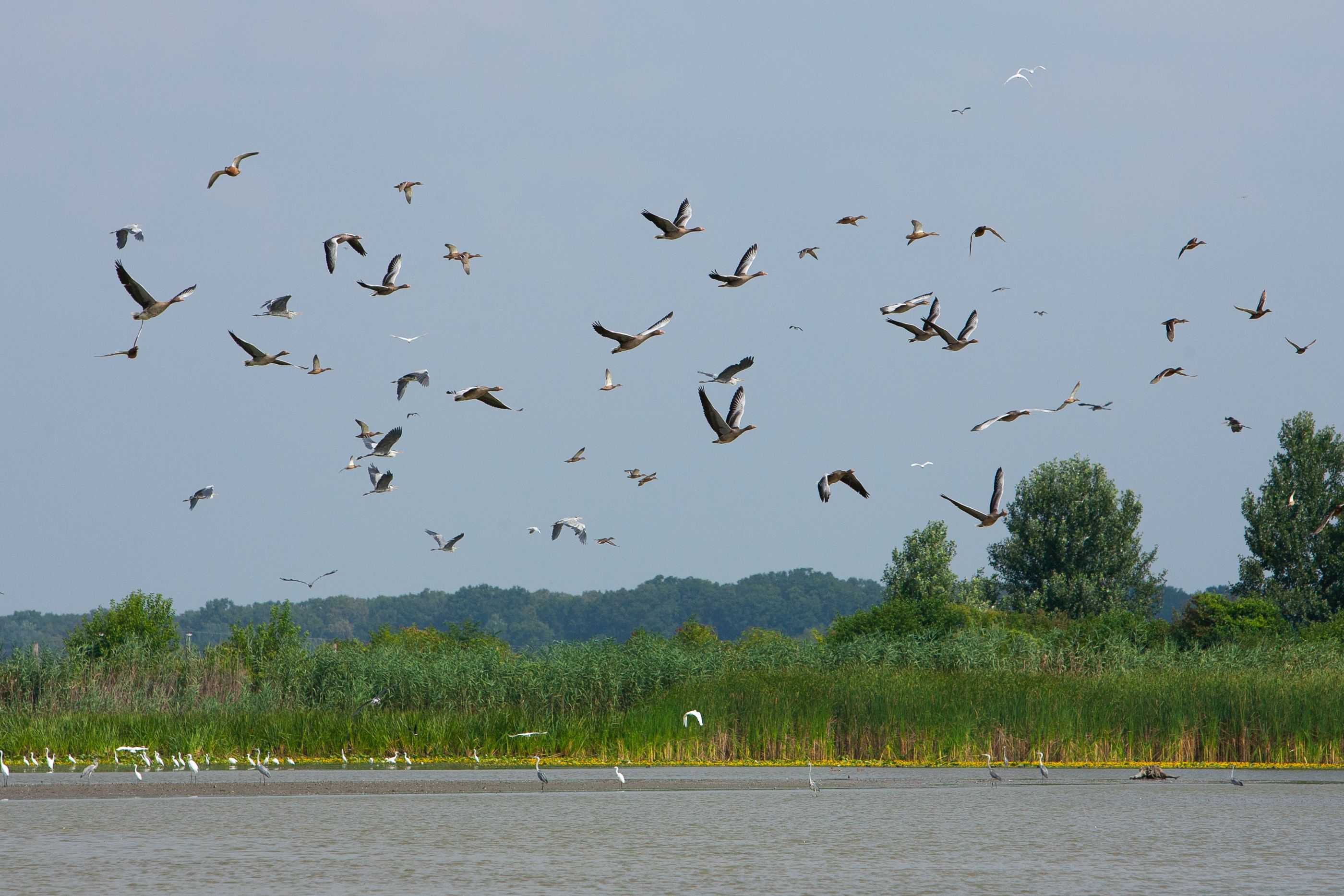
Kopački Rit Nature Park / Copyright Romulić and Stojčić
Lonjsko Polje Nature Park Sees 50% more Visitors
ZAGREB, Oct 21, 2020 - Lonjsko Polje Nature Park this year had about 50% more visitors than last year, which is a result of increased communication activities, but also of people turning to nature and spending time outdoors, the director of Lonjsko Polje Nature Park, Marija Kusmis, said.
"We have adapted quickly and systematically to the new circumstances and people have recognized that, and although we opened the Park two months later than usual this year, in May, we had twice as many individual visitors than last year, 5,300 of them," Kusmis said in a press release on Tuesday.
A new way of managing visits to the Park has been introduced, she says, and after kindergartens, schools, and groups of pensioners canceled their visits, communication was shifted to families with children, nature lovers, and all those who like an active lifestyle and nature.
"All employees and visitors have been adhering to the measures and recommendations by epidemiologists, and thanks to the nice weather in these autumn days, we believe that the number of visitors will grow further, especially in the 'Week of Vacation', when we reduced ticket prices by 50%," Kusmis said.
She said that they had increased their tourist offer and that they now managed the boat Juran and Sofija, which sailed along the Kupa River in Sisak, and boats and canoes in the eco-ethno village Strug were available, as well as professional guides.
Some of the attractions she mentioned also include visiting the village Krapje, where people and Lonjsko Polje coexist, bird-watching in the ornithological reserve Krapje Djol, and traditional cattle grazing in Repusnicko Polje field.
For the latest travel info, bookmark our main travel info article, which is updated daily.
Read the Croatian Travel Update in your language - now available in 24 languages
Mushroom Festival of Slavonia and Moslavina to Be Held in Lonjsko Polje
September 25, 2020 – When we think of the richness of Slavonia and Moslavina, our first associations are usually winemaking and agriculture. However, these two Croatian regions hide many benefits, and one of them is mushroom growing.
Apart from truffle hunting in Istria, the Croatian regions of Slavonia and Moslavina also hide a rich above and underground mushroom world. Yes, truffles can also be found in Slavonian forests, but the truffle business has not yet come to life in Slavonia as it has in Istria.
Nonetheless, for the last five years, Mushroom Festivals have been held in Lonjsko Polje Nature Park showing various mushroom species of the Slavonia and Moslavina regions. This year's edition of the Mushroom Festival will take its place this weekend, September 26 and 27, at the Repušnica Visitor Center in the village of the same name near Kutina.
This event is conceived as a combination of science (mycology, enology, sommelier), environmental protection, culture, health, sports, and recreation, because you're out in nature when looking for mushrooms, and they carry medicinal properties.
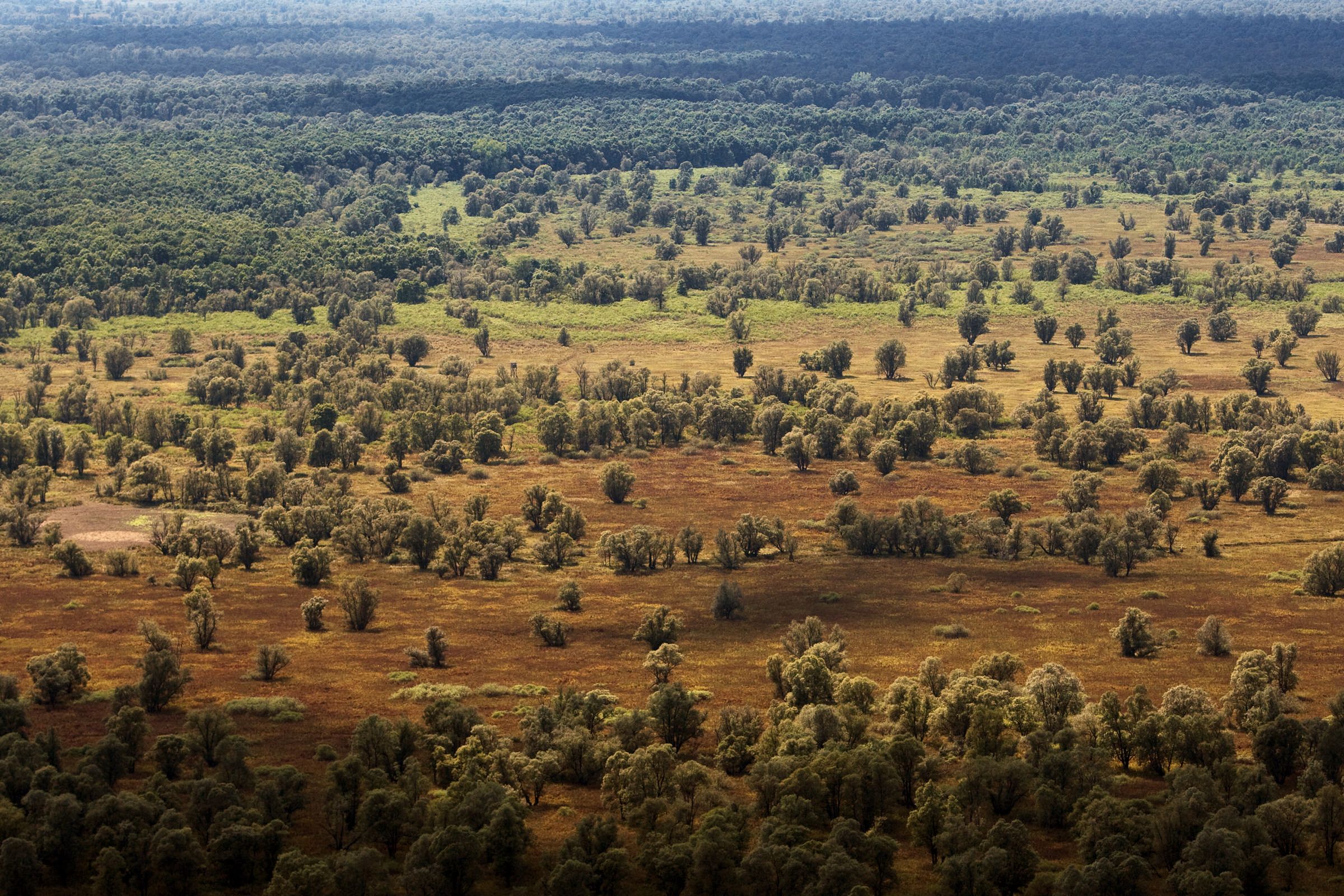
The Lonjsko Polje Nature Park / Romulić and Stojčić
Wide offer at the Mushroom Festival
Festival visitors can expect a large exhibition of mushrooms and educational content about the biological diversity of Lonjsko Polje Nature Park, and the importance of its preservation.
Mushrooms are also important for the gastronomic offer and are an integral part of various menus, especially vegetarian menus where they are one of the most important ingredients, which is why visitors will be able to enjoy the catering offer of specialties with mushrooms.
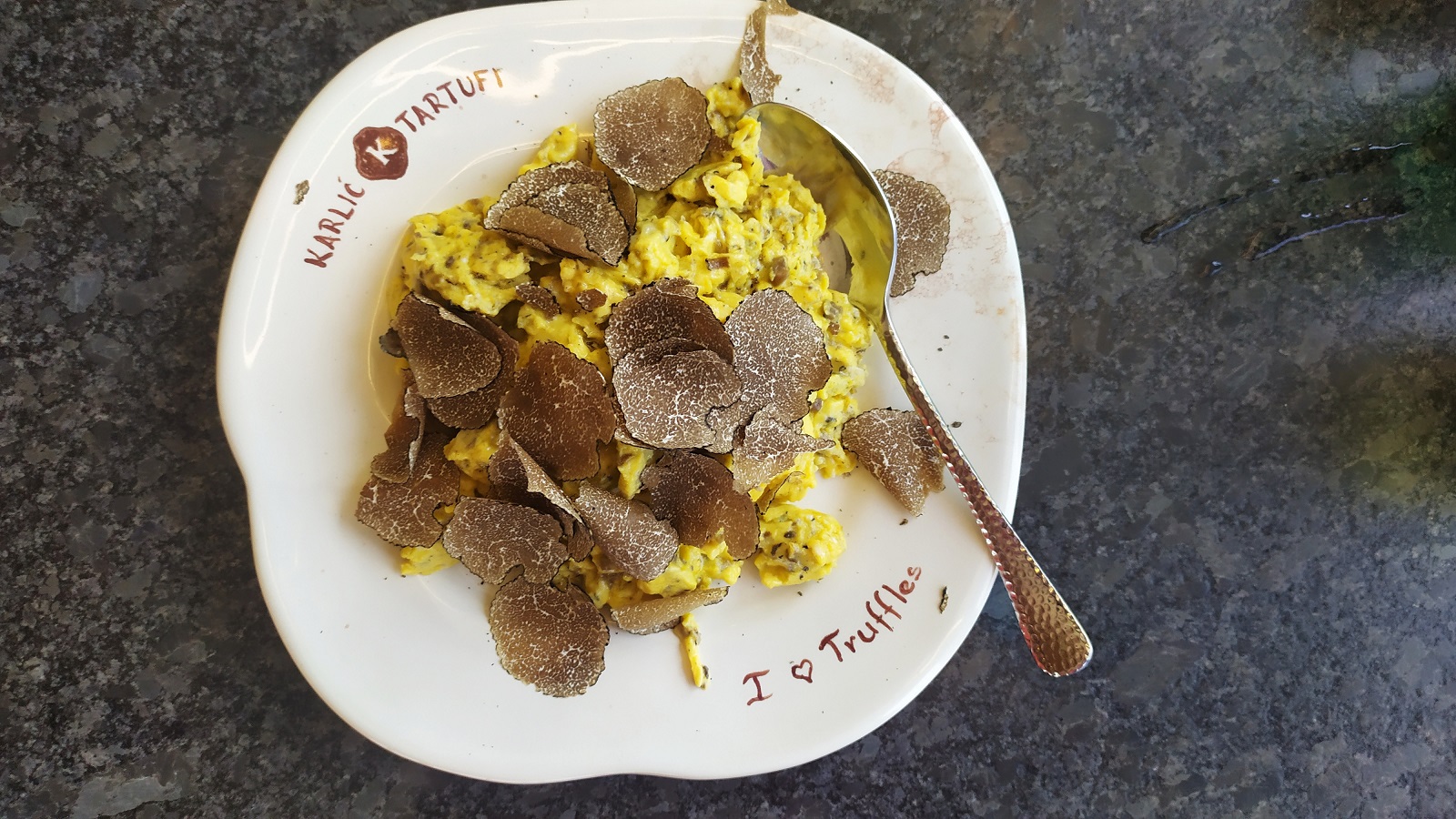
One of the rares and most delicious underground mushrooms are for sure - truffles. Authentic Istrian specialty with truffles shown on the picture are scrambled eggs ("fritaja s tartufima") / Donatella Pauković
That the popularity of this festival is recognized outside the Sisak-Moslavina County is proved by the fact that visitors from Moslavina come from the Zagreb County, since Repušnica village is only an hour away by car from Zagreb, near the town of Kutina.
For visitors to get familiar with the mushroom world of Slavonia and Moslavina, every mushroom will be exhibited and marked with cards with the Croatian and scientific names, the label of edibleness, and possible medicinal characteristics.
Mushroom empire in Croatia
The originator of the idea of the Mushroom Festival and the founder of the Center for Mushroom Research "Russula" in Novska, Matija Josipović, has been studying thousands of mushrooms in Croatia for decades and is the author of as many as 8 books on the topic of mushrooms.
In his books, Josipović for the first time presented and described some types of mushrooms that can be found in Croatia, and through his work, he emphasizes the importance of mushrooms for nature.

Screenshot HRT
Josipović also wants to find mushrooms that have not yet been found in Croatia and explore what no one else has.
"Everything in nature tries to tell us something, but sometimes we humans don't listen," Josipović said in an interview with HRT, adding that mushrooms protect trees, and thus everything on Earth. The kingdom of mushroom is, therefore, according to new scientific research, as important as the flora and fauna.
"The latest systematization of all life on Earth consists of the plant world, the animal world, and the mushroom world as a separate world," Josipović explains the importance of mushrooms.
Rich mushroom characteristics
In his book simply called "Mushrooms" (“Gljive”), Josipović also dealt with the healing characteristics of each of them.

Mushroom Trametes versicolor has many medicinal benefits and can be found in Slavonian forests / Pixabay
In a forest around Novska, which is full of mushrooms, Josip found the so-called turkey tail ("puranov rep") mushroom (lat. Trametes versicolor), known in Japan as a cure that reduces mortality in certain types of cancer by 4 to 8 percent and slows the growth of cancer cells by up to 63 percent.
"I hope that such cures will soon be recognized in Europe as well," says Josipović.
In addition to healing characteristics, it is important to know which mushrooms are top quality, which are edible, and which are not tasty, but the most important thing is to know how to recognize poisonous or deadly mushrooms.
There’s never enough caution with mushrooms, so it is important to study books and learn from more experienced mushroom growers before harvesting. Also, mushroom festivals like these in Lonjsko Polje help in educating about these important and interesting forest creatures which are not lacking in Croatia.
The program of the Mushroom Festival runs from 9 am to 6 pm on Saturday, and from 10 am to 3 pm on Sunday.
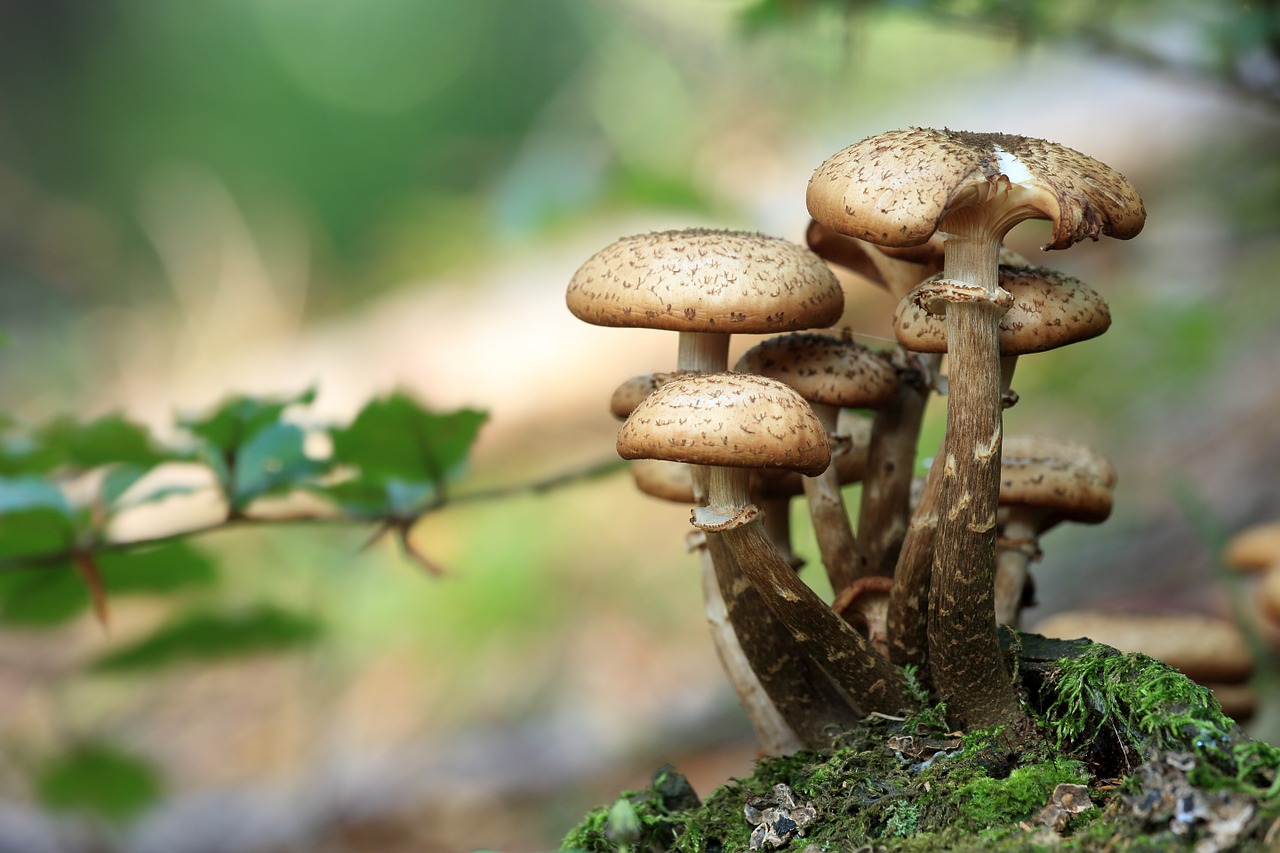
Mushrooms in nature / Pixabay
For the latest travel info, bookmark our main travel info article, which is updated daily.
Read the Croatian Travel Update in your language - now available in 24 languages
Lonjsko Polje Nature Park: A Guide to One of Best-Preserved Natural Floodplains in Europe
September 24, 2020 – Who says the biggest and most interesting parts of Croatia are on the coast? Under the slogan "Discover the undiscovered" ("Otkrij neotkriveno"), Lonjsko Polje Nature Park attracts tourists to the Central part of Croatia with plenty of natural beauty and rich cultural heritage. Only about 70 kilometers away from Zagreb, Lonjsko Polje is a perfect getaway place to experience this autumn.
This nature park is one of the biggest and best-preserved natural floodplains in Europe and is worth visiting while traveling through Croatia. It's the second biggest nature park in Croatia, so try not to avoid it on your way back home from the coast.
Thanks to the outflow of the Sava River and its tributaries into Lonjsko, Poganovo, and Mokro Fields (polja), every year, this nature park is a unique treasury of biological diversity, not only in Croatia but on the entire Old Continent.
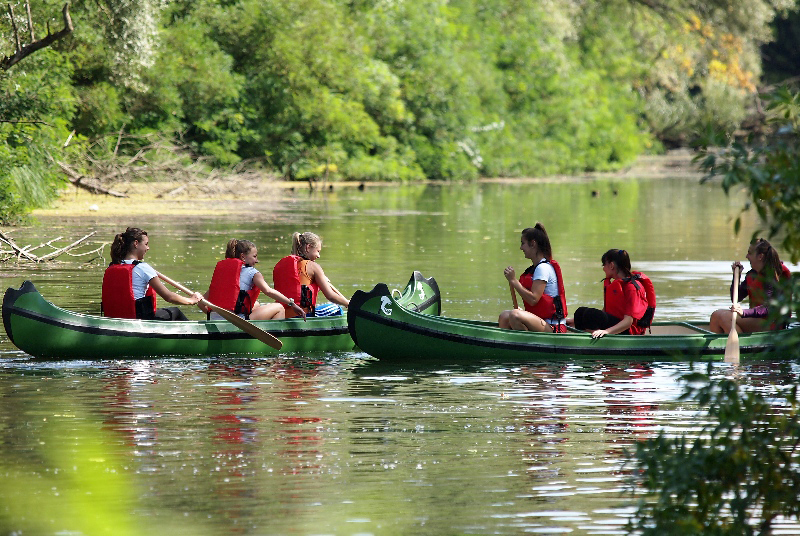
Canoeing at the Lonjsko Polje Nature Park / Lonjsko Polje Nature Park
Even though it spreads along the Sava River, its name comes from the nearby Lonja River that is also responsible for the flooding of the Lonjsko Polje area.
Discovering Lonjsko Polje from the viewpoints or the river, sailing straight to the beautiful nature, you'll get a glimpse of Posavina wildlife away from the city crowds.
How to get there?
Lonjsko Polje Nature Park is geographically located in the plain of the middle course of the Sava River, about 75 km southeast of Zagreb, and extends from the central Croatian town of Sisak to the small town of Novska.
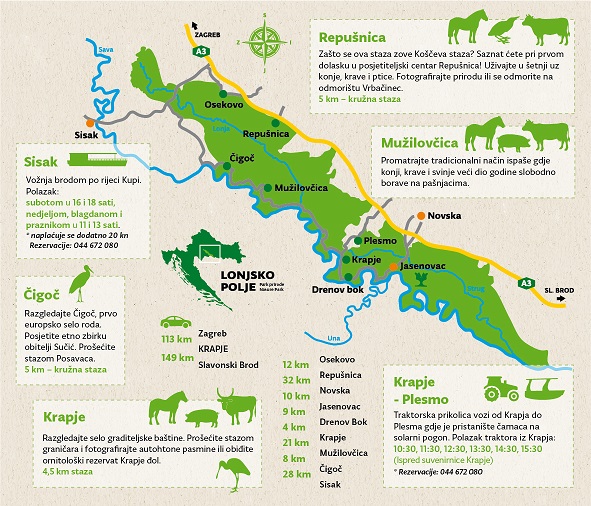
The tourist map of the Lonjsko Polje Nature Park / Lonjsko Polje Nature Park
There are 14 rural settlements in the nature park area, and the entrances are located in the villages of Repušnica, Čigoč, and Krapje.
To increase the attractiveness of the Park, a Visitor Center named Crna roda (black stork) in Osekovo will soon be opened.
While driving through the A3 motorway from Zagreb, you will probably notice traffic signs showing exits to Lonjsko Polje. You can easily get to Lonjsko Polje by exiting at Popovača and driving to the Repušnica village where you'll find a reception center.
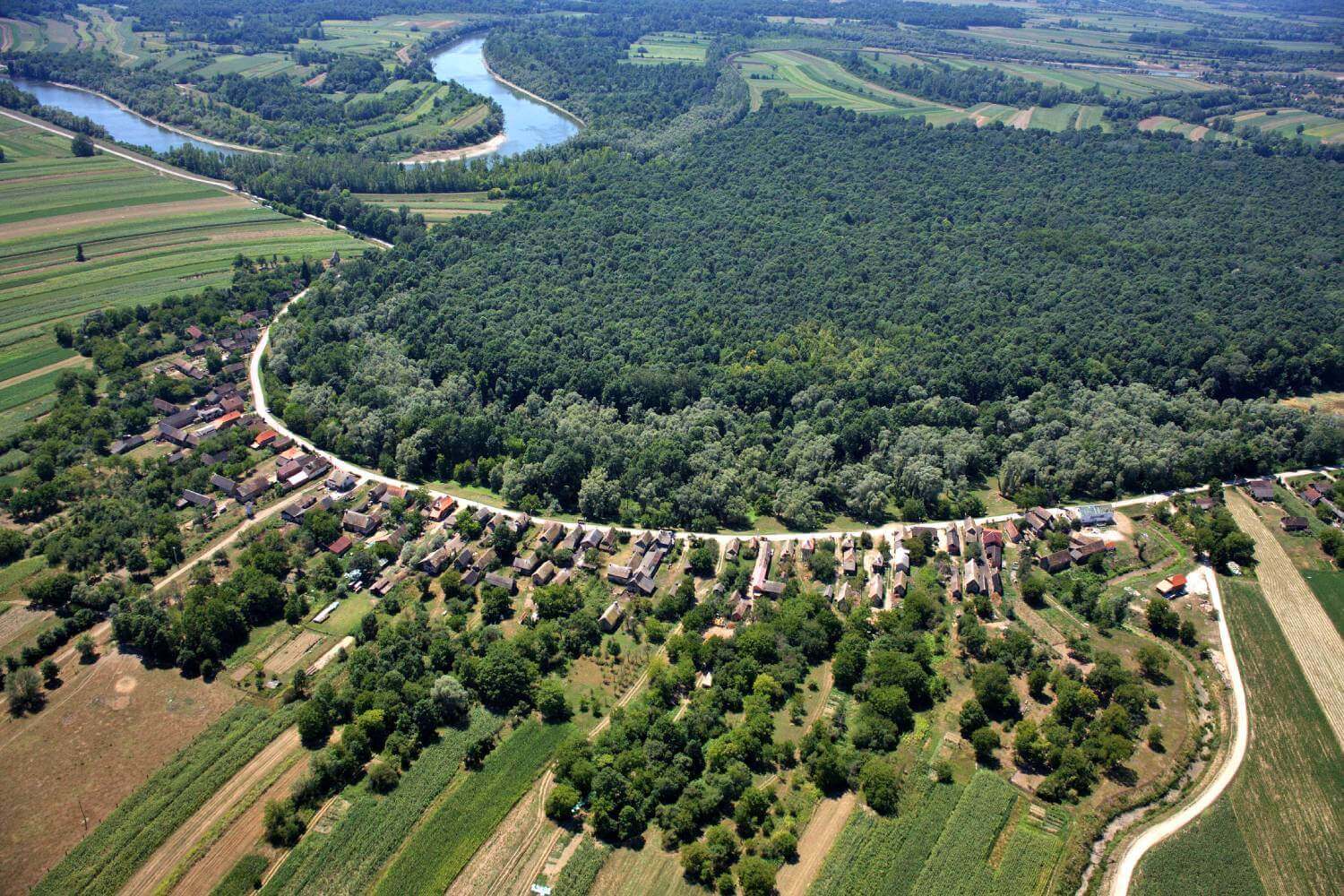
Čigoč village from above / Boris Krstinić
By exiting the motorway at Popovača, you can also get to the Čigoč village, the first European village of storks, and enter the nature park.
The other way is to exit at Lipovljani or Novska and drive to the village of Krapje where the Visitor Center is located. This way is also good if you're coming from the direction of Slavonski Brod.
What to see and do?
On Saturdays, Sundays, and holidays, Lonjsko Polje offers weekend programs that combine education and recreation by visiting all three villages (Repušnica, Čigoč, and Krapje) and enjoying all the attractions that each of them offers.
Krapje village
Krapje has the title of a village of architectural heritage. With a tour of Krapje, you can walk along the footpath, hear the stories about the traditional architecture, and visit the rich ornithological reserve Krapje đol.
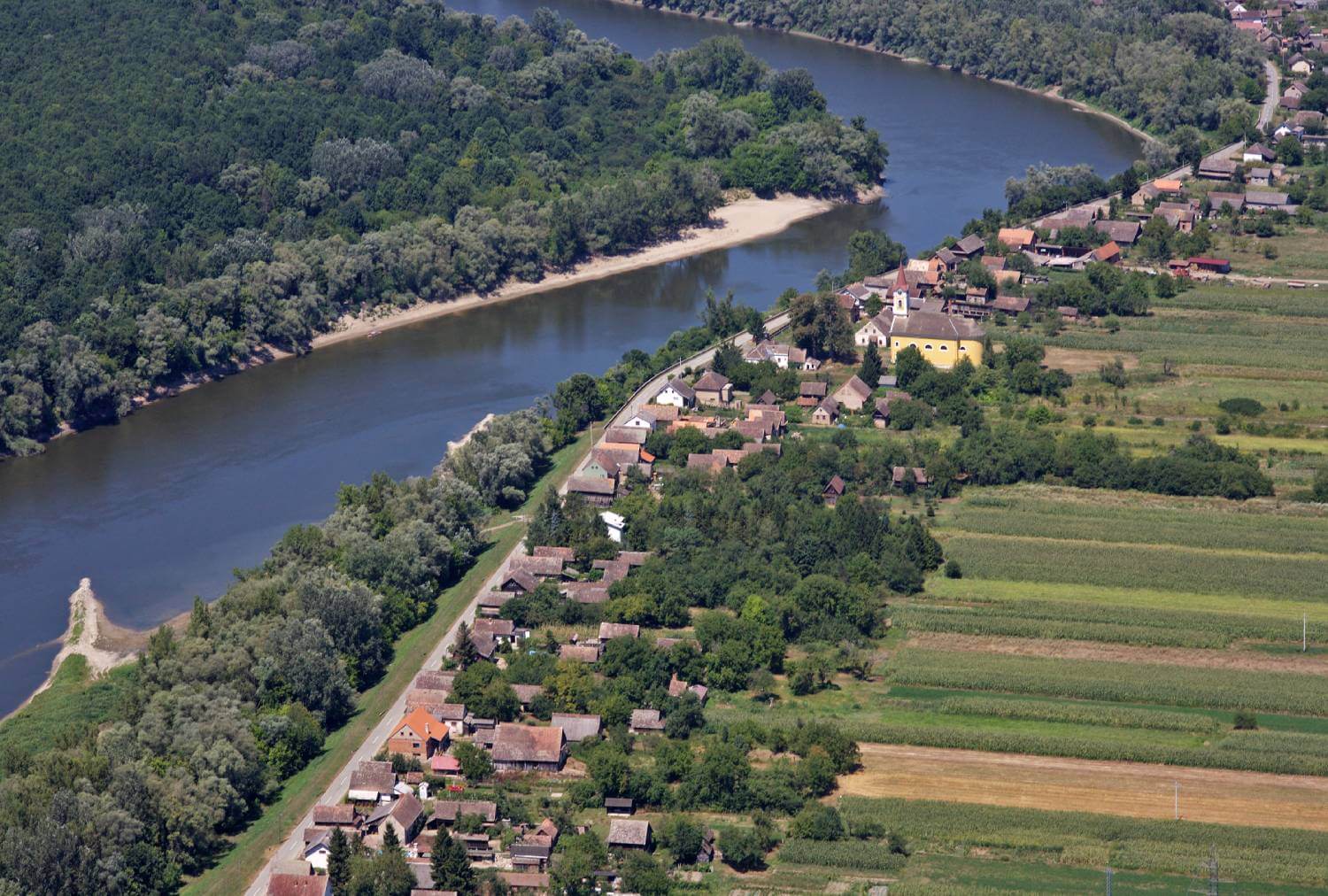
Krapje village from above / Boris Krstinić
Namely, Lonjsko Polje is a habitat for more than two-thirds of the total bird population in Croatia, so it's a perfect place for birdwatching.
Later you can embark on an oldtimer tractor ride with a trailer, from Krapje Visitor Center to the village of Plesmo, where you can experience the latest attraction of Lonjsko Polje – sailing on solar-powered boats.
Solar-powered boat ride at Plesmo
Two solar-powered boats have recently started sailing on the small Strug River from the dock in the village of Plesmo. These are almost silent vessels that allow you to discover the beauty of the self-contained tributary of the Sava River.
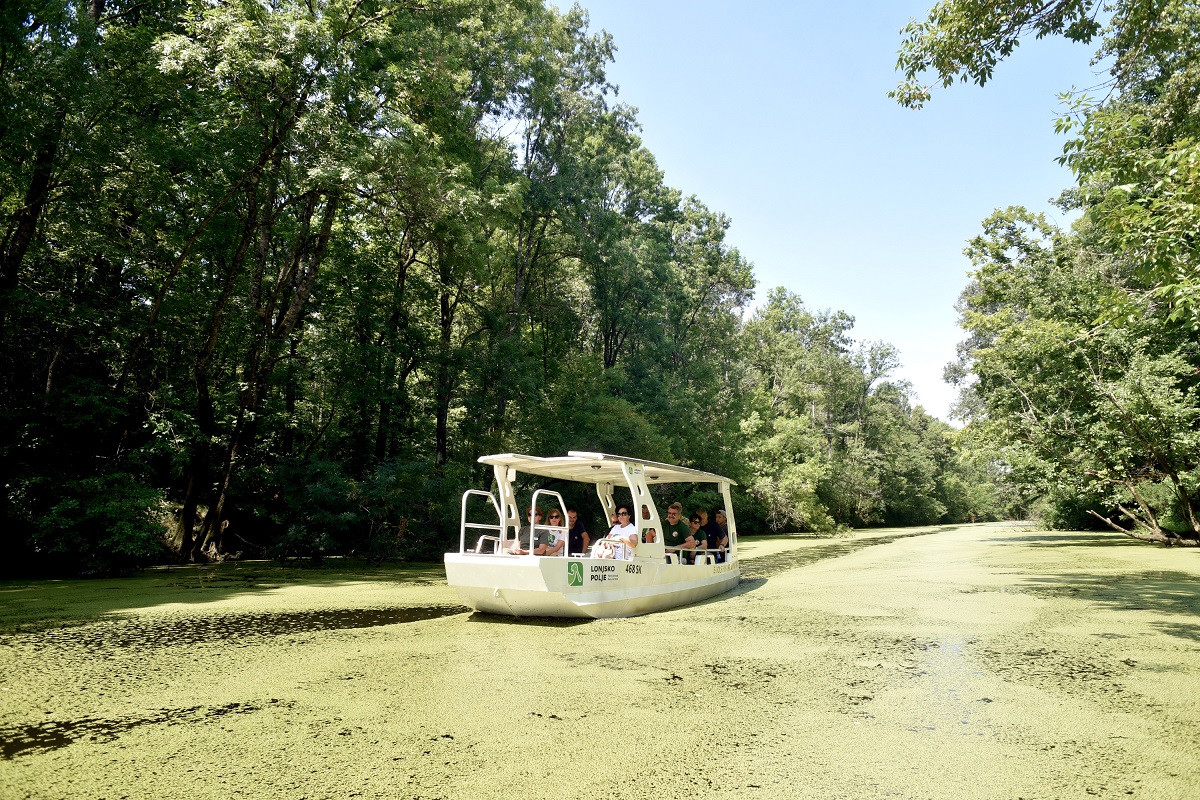
Solar-powered tourist boat / Željko Gašparović
The boat ride gives you a discreet view of nature as it has been developing in and around the river for thousands of years – without human influence or in minimal contact with it.
For example, during the ride, you can see beaver habitats, as well as the cattle grazing, along with the birds for which Lonjsko Polje is well-known among ornithologists around the world.
The boats, but also the canoes, can be used on weekends and holidays with prior reservation by phone, and during the week by appointment, as well as bikes.
The oldtimer tractor to the dock in Plesmo runs every hour from 10.30 am to 3.30 pm. Due to the limited space and large interest, it is recommended to schedule your tractor and solar boat rides.

The oldtimer tractor with a trailer / Lonjsko Polje Nature Park
Near Plesmo and Krapje, there is also an eco-ethno village of Strug where you can try some traditional Posavina meals and even stay for the night.
Stork village Čigoč
Čigoč village is known for its famous and strictly protected migratory bird – the white stork. On Sundays at 1 pm, you can hear a story about the white stork at the Visitor Center Čigoč.
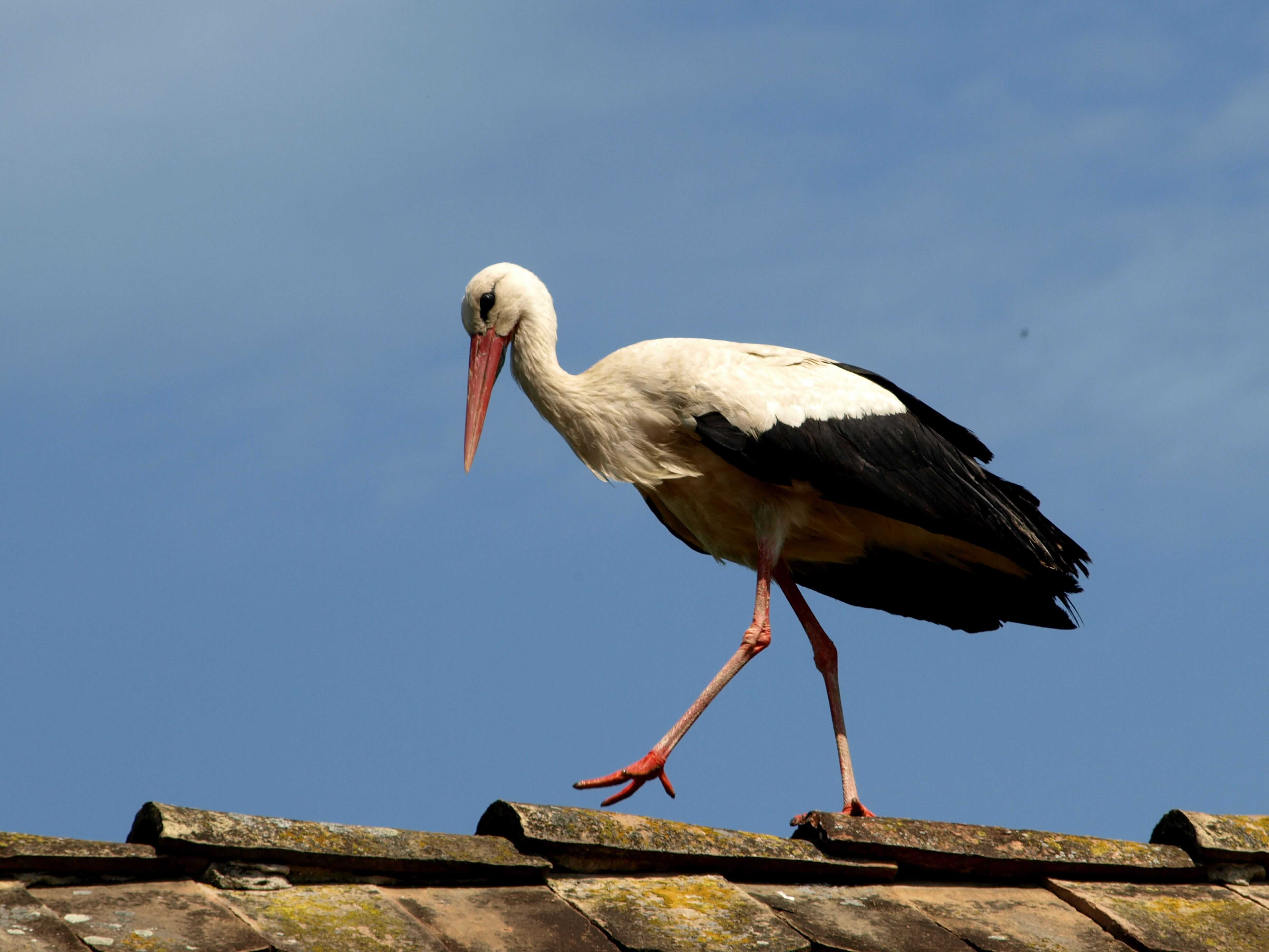
White stork / Romulić and Stojčić
Together with a village tour, where you can see wooden Posavina houses and recognizable stork nests, you can tour the ethnic collection by the family Sučić, and observe the traditional way of grazing cattle in the nearby village Mužilovčica.
It is also possible to enjoy a walk with horses, cows, and birds along the Koščeva staza walking trail that passes through Repušnica.
Traditional wooden Posavina house in Čigoč / Romulić and Stojčić
More boat rides in the Park
In addition to innovative solar-powered vessels, the Vodomar vessel – a ferryboat, a 15-meter-long raft – is still in operation for sailing on the Sava River. Its dock is in the village of Drenov Bok, and during the ride, you can see the attractive river landscape with natural riverside where willows and poplars grow, and sandbanks are spread.
In the past, the traditional river-powered raft was used to transfer people and vehicles across the river. Today there are two of those rafts in operation – in the villages of Kratečko and Lukavec Posavski, and they are intended for tourist sightseeing.
This is also an unforgettable experience provided by Lonjsko Polje.

The Vodomar vessel at the dock in Drenov Bok / Lonjsko Polje Nature Park
The tourist boat Katarina 1 is intended for popular cruise excursions, and its dock is in the municipality of Jasenovac, at the foot of the railway bridge.
During the ride on the Sava River, you can reach the confluence of the River Una to the Sava, and favorable hydrological conditions enable sailing on the Una River. This ride provides a unique experience of the Posavina landscape and the passage under the road and railway bridges.
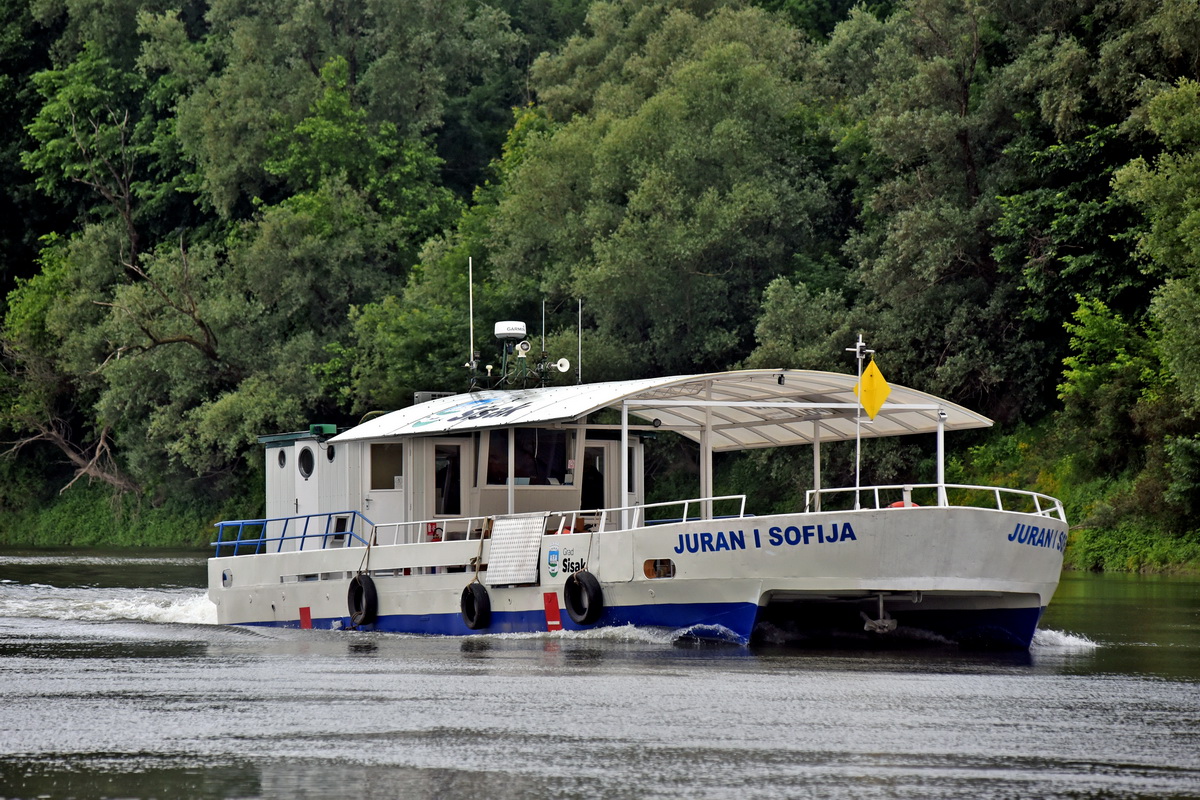
The tourist boat Juran and Sofija / Željko Gašparović
One of the novelties this year in the Lonjsko Polje Nature Park is also the old reconstructed boat Juran and Sofija. It started to sail again on the River Kupa in Sisak. On this boat, you can get to know the historic center of Sisak and the Sisak part of Posavina.
Walking and cycling trails in the Park
Walking trails that lead through the Park provide a view of wild and indigenous species of domestic animals. They are Posavina horses (posavski konj), Turopolje pigs (turopoljska svinja), and Slavonian-Srijem Podolian cattle (slavonsko-srijemsko podolsko govedo).
Slavonian-Srijem Podolian cattle (slavonsko-srijemsko podolsko govedo) / Boris Krstinić

Posavina horses (posavski konj) in the field / Lonjsko Polje Nature Park
Of the many interesting walking trails along which you can observe cattle, the Staza graničara ("Border guards Trail"), which starts from the Visitor Center Krapje, stands out in the park. A walk along this trail also brings a breath of the past because the Military Frontier (Vojna krajina) – the border between the Austro-Hungarian and Ottoman empires – once stretched here, after which the trail got its name.
Today, two replicas of wooden historical watchtowers (čardaci) are symbolically built next to it.
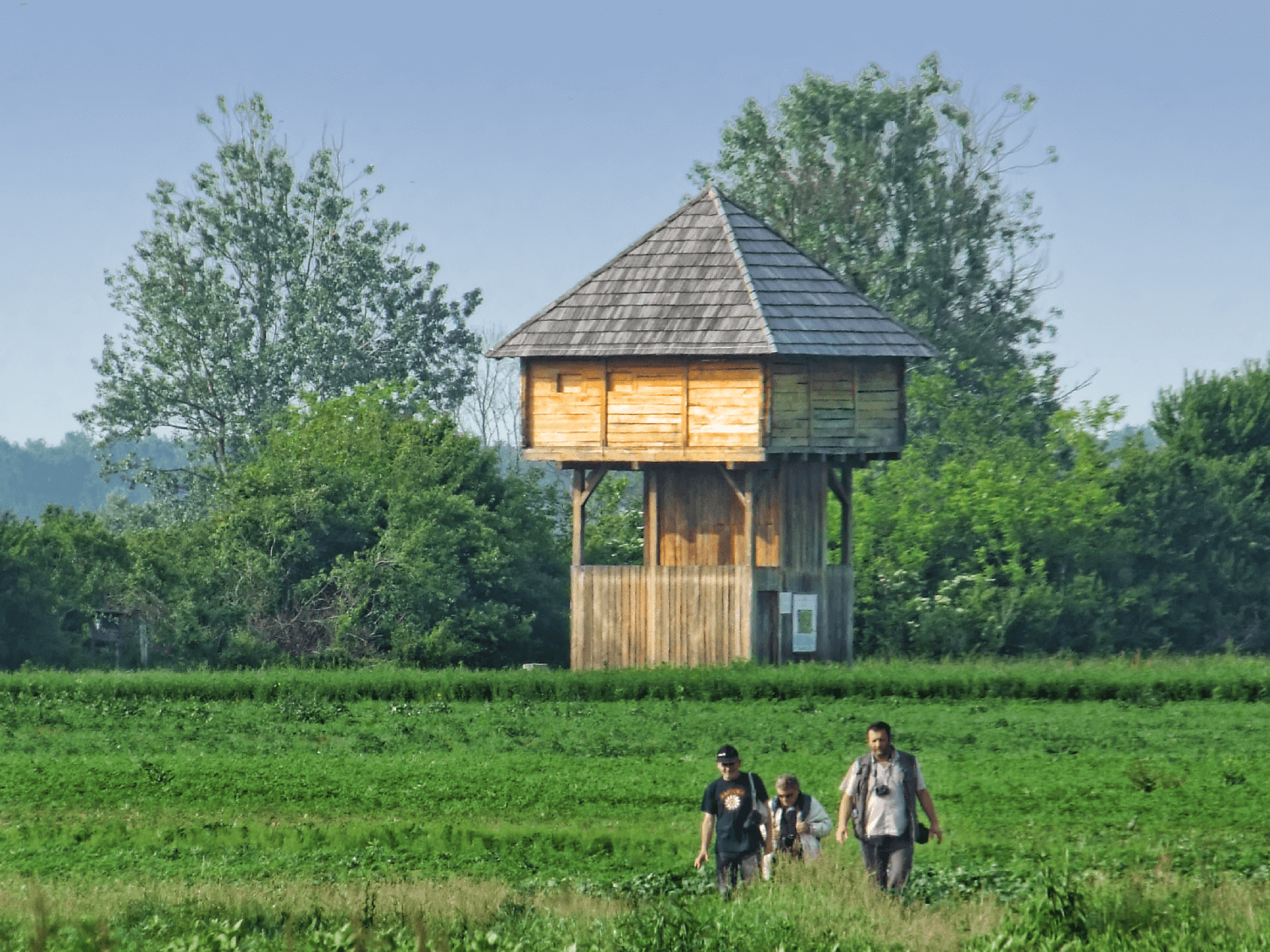
Wooden historical watchtower (čardak) / Lonjsko Polje Nature Park
Other interesting walking trails include Staza Posavca, Tenina staza, and Koščeva staza.
Cycling trails of the Lonjsko Polje Nature Park are perfect if you love easy and pleasant rides because there are almost no height differences. The sparse traffic on the rural roads that the routes pass through makes them extremely safe to drive.
Also, some rural households that are engaged in tourism here offer cyclists refreshment and enjoyment of the original Posavina gastronomy, and cyclists are even allowed to rest in "bike and bed" accommodation.
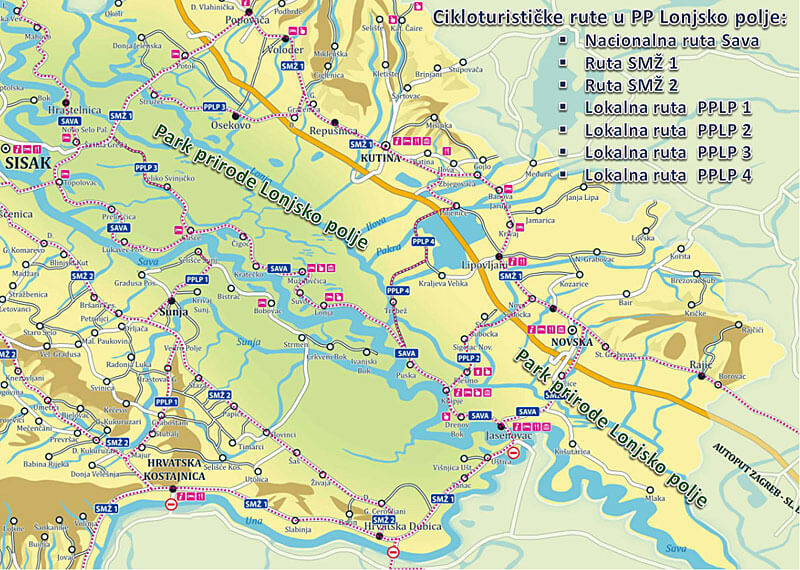
Bike routes at the Lonjsko Polje Nature Park / Lonjsko Polje Nature Park
Tourism and environment
All the beauties and attractions of the Lonjsko Polje Nature Park are also available on weekdays, but with prior notice. Also, the prices of all attractions are listed on their official website.
Although the Lonjsko Polje Nature Park offers a multitude of tourist facilities to visitors, their primary activity is still the preservation of biological and landscape diversity that the Park abounds in.
It is also important for them to ensure the survival of the local population in the rural area of the Park.
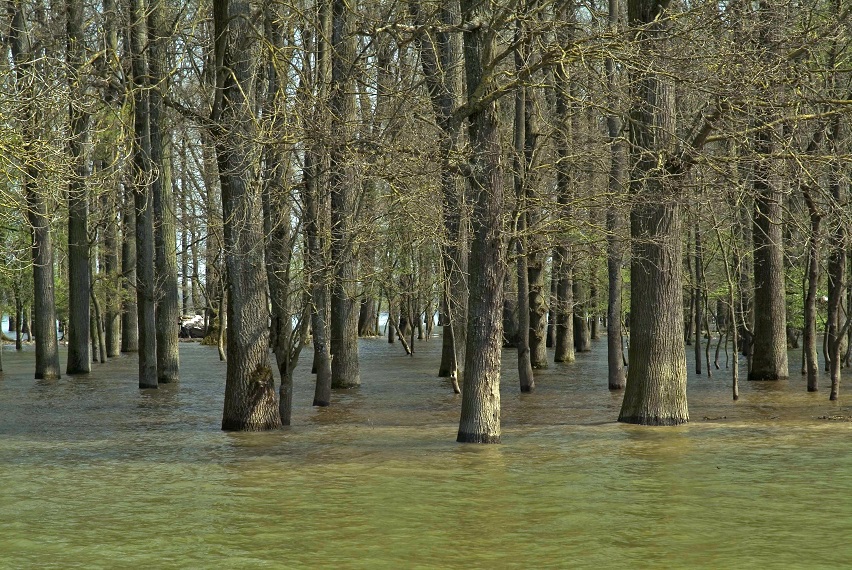
Flooded forest / Lonjsko Polje Nature Park
Lonjsko Polje Nature Park respects the prescribed epidemiological measures, which means the protection of employees and visitors of the Park.
Since Lonjsko Polje is the second-largest nature park in Croatia, boasting an area of more than 50,000 hectares, it is easily possible to stick to the recommended distance between people.
For the latest travel info, bookmark our main travel info article, which is updated daily.
Read the Croatian Travel Update in your language - now available in 24 languages
Join the Total Croatia Travel INFO Viber community.
Lonjsko Polje Nature Park Continues to Develop Tourist Offer with Solar-Powered Boats
August 8, 2020 - The second-largest nature park in Croatia, Lonjsko Polje Nature Park, continues to develop its tourist offer guided by the slogan "Discover the Undiscovered".
HRTurizam reports that as of this weekend, two solar-powered boats will sail along the Strug River from the port in the village of Plesmo. These are almost silent vessels that will enable tourists to discover the beauty of the hitherto self-contained tributary of the Sava River.
"Discover the undiscovered - is the slogan with which we encourage guests to come to Lonjsko Polje Nature Park, but also which directs us in the development of visitor infrastructure and content. Namely, we who work in Lonjsko Polje, as well as those who live here, know how important perspective is for experiencing the beauty of the local nature. That is why we want to provide visitors with a unique view of Lonjsko Polje - both the one from the lookout point and the one from the river," said Ivor Stanivukovic, director of the Public Institution Lonjsko Polje Nature Park.

Tomislav Kor
In addition to solar-powered boats, canoes await visitors at the Plesmo pier. Important information for travel agencies is that boats will be able to be used on weekends and holidays with prior reservation, and during the week by appointment. Also, from the Krapje Visitor Center to the pier in Plesmo, visitors will be driven by an oldtimer tractor with a trailer.
"Solar-powered boat rides on the Struga allow tourists to sail silently into beautiful nature. They will pass by beaver habitats, see cattle grazing, experience the flight of birds for which Lonjsko polje is known among ornithologists around the world," concluded Stanivukovic.
Lonjsko polje Nature Park is the second-largest nature park in Croatia. In order for visitors to leave it with as many fond memories as possible, great attention is paid to the development of the visitor infrastructure and content.
For the latest travel info, bookmark our main travel info article, which is updated daily.
Read the Croatian Travel Update in your language - now available in 24 languages


